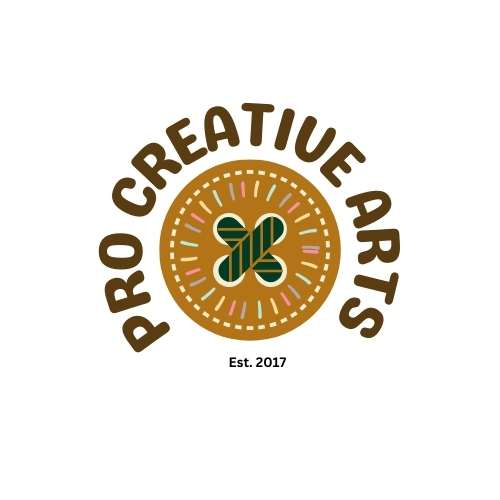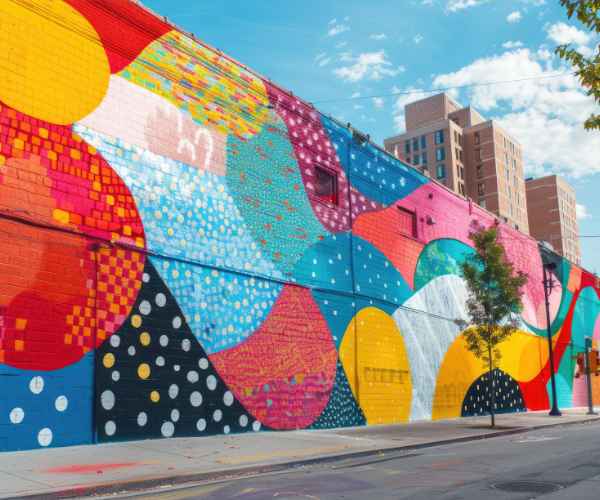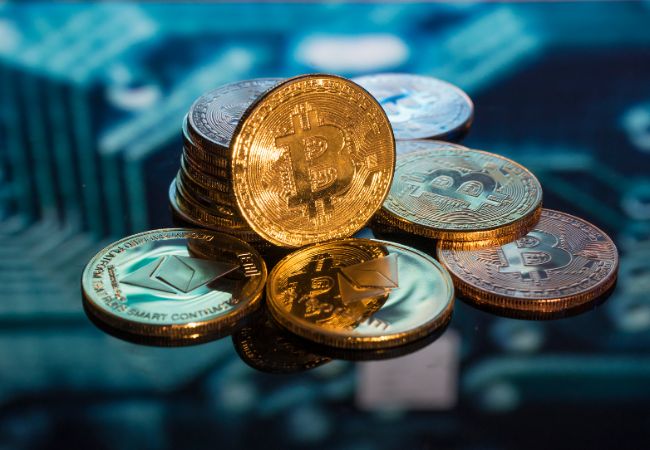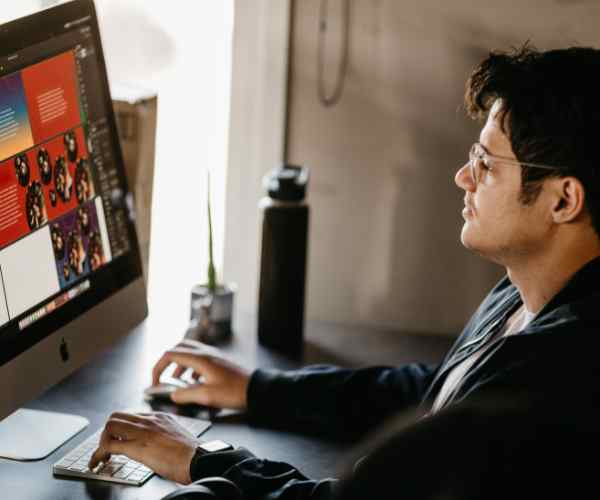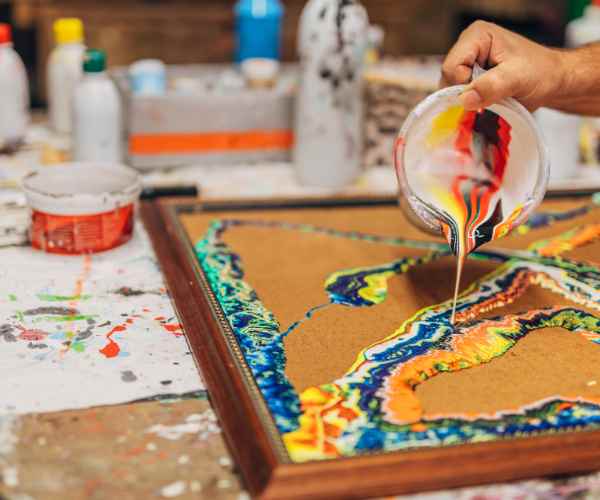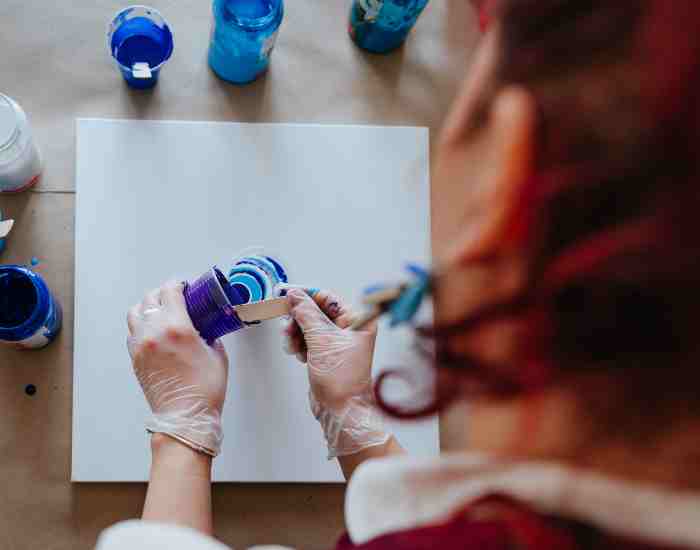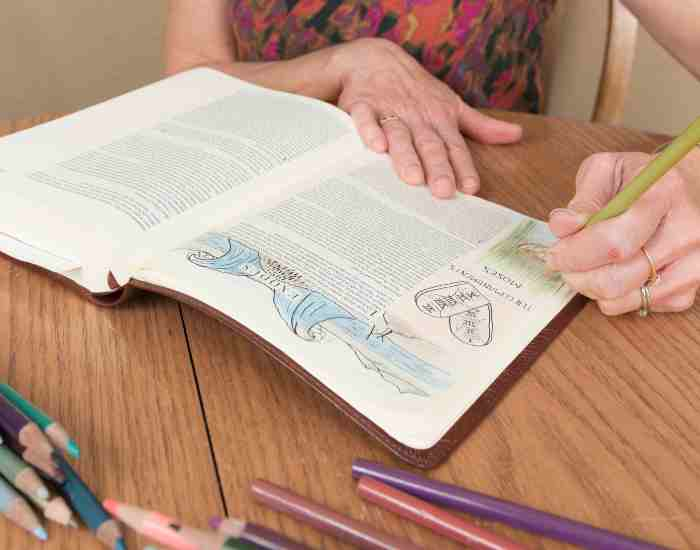Do certain colors, patterns or styles transport you back in time? Stepping onto them makes the past come alive again. The return of retro designs in modern art is a great proof that all our creative endeavors are based on nostalgia immersion.
With the chaos engulfing today’s world, Most of us miss the simpler and more colorful times. This nostalgia translates into the art and design around us where the whispers of mid-century modern sophistication or the brash 80’s neon colors have made a stunning comeback for the second time. Practically every artist and designer is exploring their nostalgic aesthetics to create retro style artworks which can take pride in the past and relate well to the modern age.
From bold colors of vintage patterns to retro themes’ emotional feelings, it’s revival is more than a hype. It’s a culture. With growing acceptance of these retro styles, it is interesting to see how artists effortlessly bring that flair into the works of modern times, creating a blend of old and new details with captivating designs.

The Allure of Nostalgia in Art
The Emotional Connection to the Past
Nostalgic aesthetics have the power to invoke memories that capture the core of our emotions, complementing our existence. It is perhaps not surprising that many people feel a special attachment to specific styles, colors, and designs in regard to their paintings. To illustrate this point, I remember the dominant floral wallpaper pattern my grandmother had on her kithen. This design has always influenced me, who tends to appreciate bold retro patterns.
On the flip side, “how New York City shapes art” is an article written by Alex Katz; and if you read his works, it is clear that his art is both personal and universal; the root being located within his experiences or memories, what can be found in his modern art. His combined flat colors and basic shapes equally express the feeling of modern day as well as ancient style. Today, he often talks about how he was raised in New York City and how this city motivates people and shapes their art. This connection to the past in a sense, is the reason many children paint or build constructed pieces in the first place and feel close to those pieces even to this day.
The Effect of Social Media on Vintage Trends
Instagram and Pinterest have developed into significant reinvents of retro designs today writes style designer Nick Jones. They’re great sources for everything design wise, there’s mid century modern furniture to 90s grunge. A simple swipe would leave you confused with beautiful retro aesthetics and leave you with endless ideas and creativity.
To give you an example, one hashtag that has been trending a lot is #VintageVibes, which designers and influencers use when they showcase their version of vintage. Only the other day I saw one designer repurpose a standard 1980s neon sign into modern art by fusing it together with new technologies. This form of creativity is just all over us along with this with the availability of online inspiration.
Moreover, One of the most popular picture sharing websites has helped devise boards of retro designs for users helping them design anything from clothes to home decor in these beautiful aesthetics. The reintroduction of geometric shapes from the 70s and 80s pop turquoises are mashups of these conversations online.
It is quite astonishing to witness how the past influences art, design and even fashion. All of this is strengthened by the digital age. Inspiration plays a huge role in art or design, and that is what makes the modern world so beautiful, all of the nostalgia is breathtaking.
It is even fascinating to note that retro designs are coming back._
Retro Design Elements Making a Comeback
Let’s Talk About: Color Picking, Molling and Tone
Theater trends in colors have always been something I find to be an interesting conversation. In my first year of a design school, i was inclined toward more muted colors like beige and even the most softest of pinks. The gray color also appeals it was all just a safe zone for me. But things have changed drastically the past couple of years. The explosion in the color palette has shifted dramatically and turned back toward an era of the world that relied only upon creative energy and vibrant, bold colors.
It is quite clear that the current contemporary artists are shifting more towards powerful palettes and colors. Easy examples like Yoyoi Kusama’s work include the nontraditional palette of yellows, reds and polka dots that are one of the main reasons why her fans around the world love her. But that’s not all, she is also known for her immersive installations, all of which portray how vibrant colors evoke powerful emotions and strong feelings while creating a stunning visual Beasts. Same is the case with Donald Robertson who uses that play around with color in a combination that feels reminiscent to the pop art period but infuses a modern twist to it.
This transition in color reflects a sense of hope and bravery which is an important characteristic in today’s world. It is encouraging to see attention grabbing colors comedy to the front stage of today’s art and design media,enhancing the spirit of these communities.
Typography: Capital Letters and Retailed
Let’s discuss typography because it’s probably one of the things I enjoy most about design. That comes as no surprise, yet the vintage fonts still show up within contemporary design to give it that extra uniqueness that’s so special. The whole area of branding and art has certainly been given a new lease of life with the great revival of retro typography.
The contemporary era is shedding off feelings as more brands add fonts like Coca-Cola’s vintage fonts into their logos when all the fans relate to the nostalgia. Coca-Cola’s logo hasn’t undergone much modification over the ages, but recent commercials have featured a more retro style era as Rosenberg marketing featured a notable focus on limb because it appealed to customers on an emotive level.
One artist who is great at blending in a vintage font into her work is Jessica Hische. She understands some aspects of traditional sign painting and gives it a modern spin when required though her main work deals with custom lettering. I remember seeing one of her works that dealt with a combination of vintage typography with a modern illustration, it was a nice mix and an intriguing sight to behold. Such typography does more than just give a certain flair, it tells the audience a story and converses with them at a level deeper than basic appreciation for the piece.
Mixing patterns with new textures and designs
Patterns happen to be one more developing facet of retro design that were surfaced during contemporary art. Sending decor back into the days of polka dots and florals also gives contemporary art a fresh take on older styles. The retro patterns feel as if they have been rediscovered and are now being reintroduced to the many over the years.
Take the work of fabric designer Marimekko for instance. Their retro floral fabrics widely used in the 1950’s are making a comeback in almost all aspects of life ranging from home decor, clothing and handbags. The balance between the old and the new designs is quite intriguing as these old designs are refamiliarized but with a grip on present time.
I went recently to a nearby art festival where an artist exhibited a remarkable collection of artwork that featured a combination of vintage patterns with contemporary touches. The application of layering as well as texture in dexterously merging with assorted designs was visually engaging. The amalgamation of classical and contemporary styles helps to delve in the essence of modern art which does not shy away from taking risks and venturing out.
The Impact of Retro Design on Different Art Forms
Painting: A Return of Traditional Styles
The retro design influences are notably present as well in painting, where modern painters are blending elements with some sophisticated techniques. It images how they bring together history into their work and produce art that is both ancient and fresh at the same time.
As an illustration, Kehinde Wiley’s works of art combines portrait painting with modern portrait painting, where from themes of painting he draws it from history. His use of color and decorative design recalls more classical art while addressing more contemporary concerns. The transformation implements when viewing live the designs such, as history and the story which those designs tell intertwine so clearly.
Graphic Design: The Combination of Old and New
It has become possible in graphic design to utilize the traditional in ways that had not been dreamed of when coupled with the use of technology. Designers keep coming up with new ways of preserving the character of the past while utilizing today’s resources.
A great example of this is Chris Biron’s work, who designs printed material and adds a retro feel to his works. The last campaign for a nearby music festival that he executed had graphics that would have been implemented decades ago but were still made in an engaging way. This goes to show the kinds of stories one can tell viscerally through the use of technology in an old art form.
Fashion: Retro Themed Clothing
Fashion is also another area where retro themed designs seem to be slowly creeping. More and more designers are looking backwards and crafting collections that pay homage to past eras’ styles but reimagine them in new ways.
A fashion show that I attended around this time last year displayed clothing inspired by the fashion of the 70s. I was reminded of how such clothes looked with their busy designs, flared trousers and bright colors but such items were also very much on trend with today’s clothes. Which only goes to show how fashion has the ability to elevate something familiar into something else.
This nostalgia-infused retro wear aid people in showcasing their unique flair while also allowing them to pay homage to the past. Seeing designers from all walks of life, embracing the retro is an amusing spectacle in that it reinvigorates our creative sphere., , This revival of retro-inspired clothing not only cherishes the past but enables people to showcase their distinctive fashion sense with a bit of greats. Undoing the magic that a good retro does, these elements across the realms intrigues artists and designers alike.
FAQs
Can you list some retro design duds that can be spotted in contemporary art?
There are however some retro designs that have transcended the barriers of time and have regained their popularity in this new modern age.
Mid century modern, for example, is back in style as it has sleek lines and organic shapes that are coupled with vivid colors. This style has the potential to capture the hearts of those who seek for designs that are not overly complicated. From furniture to graphic design, artists and designers are currently combining these components to create work with a contemporary and comfortable feel.
The 80’s neon look is yet another style that is slowly finding its way back into the different eras. Stuff like bright neon colors, geometric shapes, and a childlike sense of fun were offered through the different Aesthetics. So recently, I spotted a mural that I think sums up this entire Aesthetic way too Good with all the swirling Neon colors which felt like a fun blast from the past.
One of the developments making headlines is 90s grunge still, and it is still alive and kicking in the realms of fashion and graphic designing. With all the nooks and scruffs, plaid and the slight hint of defiance, grunge has entered the creative’s toolbox and is more than likely utilized in augmenting and adding a primitive feeling to the work.
These trends are a testament to our inclination as a society towards certain aesthetics from the past and this increasingly aids the creators in conveniently repurposing the traditional looks while remixing them.
Everything good eventually comes to an end but how do creators blend the past with the present.
Creating works of art that bear a hint of nostalgia while being contemporary can be achieved by embedding vintage pieces with modern ones, that being said, here are some tips on how to integrate vintage elements into your art:
- Usages of the Old Fonts Loved by Designers: Typography tends to have a significant impact on the overall tone of your design. Try incorporating some old-school typefaces that are characteristic of a particular period. There are many online resources where you can find retro typography that will allow you to embellish your designs.
- Mix Patterns and Textures: Make patterns and textures that reveal retro elements to fashion. Example of this would be mixing floral patterns with geometric designs to achieve a more unique look.
- Draw from Personal Memories: Try thinking about your childhood or any important events in your life. Personal history can deepen your works and enhance its visual structure; it will be more than just pretty.
- Study Retro Artists: Take ideas from artists from earlier times. Understand their skills and how they construct art and what can you do to build that in practicing now.
In my view, retro elements make people’s work cheerfully and creatively wonderful, and spectators are welcomed in the art through several factors.
Nostalgia has a psychological effects in us that is fascinating when combined with creativity and design choices.
Nostalgia does render strong emotions and vivid memories, which influences how artworks are seen and how they are made.
It happens mostly for me that we are able to trace back to certain memories in what we are engaging in and with that nostalgia in mind, we tend to feel a wave of new ideas to come. Because of the nostalgia in this moment, it aids the viewers to interpret other themes as well, and there is a rather common relation to this with the artists where they make an effort to utilize different aspects of their past life such as their childhood therein. For an instance, viewers are able to integrate their own memories therein and thus, it creates even more sense. In a cosmetic advertisement which is rather encouraging to the people, it asserts that there is warmth within people and eloquently depicts memories of childhood.
Nostalgia, on the other hand, can also invoke feelings of home. In this time and age, when everything is rapidly changing, people tend to take comfort in things which look to be familiar to them. This yearning for a certain aesthetic has impacted a variety of modern day products and designs, including branding and the decor of homes.
Once I attended an art exhibition cum gallery where the focus was mainly on childhood toys and games: colorful, vibrant and fun. Those sorts of art work often remind me of my childhood and the memories I have from. Now, such feelings not only interest the audience but also provide space to talk about common experiences people have gone through with the culture.
Are retro trends here to stay?
There is a plethora of other topics to discuss but one that stands out in a discussion that revolves around decades old designs trends in the art world is how sustainable it is in today’s rapidly changing world. While some people view it as the latest fad that people will quickly move on from, I believe otherwise, and here is why.
To begin with, the cyclical aspect of fashion and design contributes to the rediscovery of lost styles. Outdated styles can be resurrected by newly developed fashions as fashions develop more over time, especially by younger generations who discover them anew and finetune those aesthetics.
In addition, nostalgia emotionally helps any retro trend and adds a sense of timelessness to the trends. As people are able to connect to preexisting styles and aesthetics, there will always be room for retro in contemporary art.
Lastly, retro design has also been further merged with 21st century techniques by various artists, and these works have been engaging to modern audiences. The combination of the past and the present ensures that retro design still holds its own place in an ever evolving world.
Conclusion
In synthesis of all the points of discussion put forth, it becomes evident that the shift in focus to retro design trends in modern day art work is not a mere trend. Rather it is one of the most popular cultural moods of all times, drawing on memories and emotions of a past time during which it was last popular.
More importantly, these trends should remind practitioners, whose imageries are often inspired through nostalgia and past traditions that embellishment and creativity lies in the amalgamation of the past, present and the future.
I challenge you to explore retro elements in your works. Nostalgia has its charm, but learn to counter and twist it any way you wish. By amalgamating the yesteryears and the current trends, you will be able to make art that will connect with both you and the audience and generate happiness and creativity for ages.
